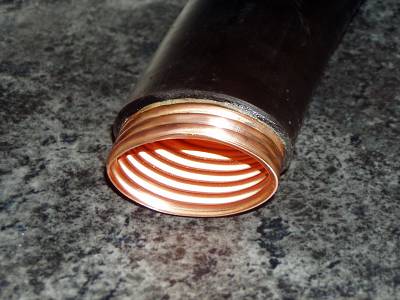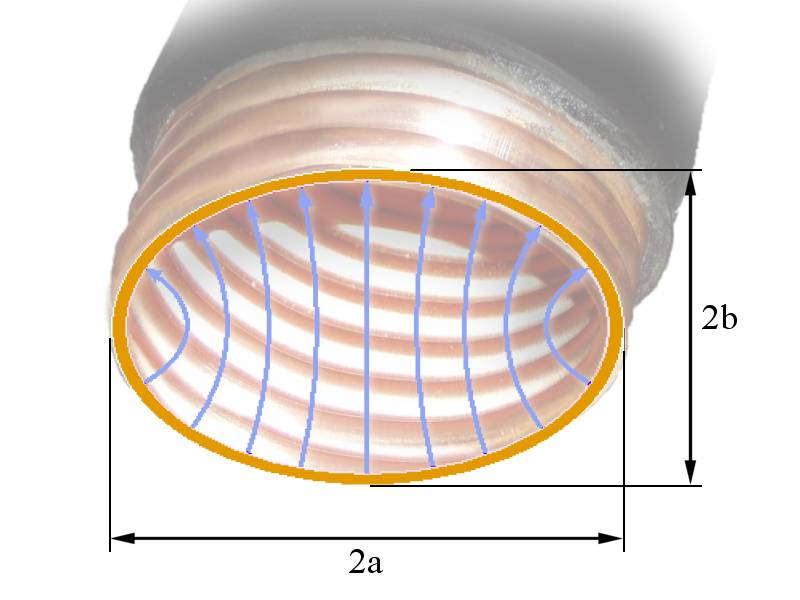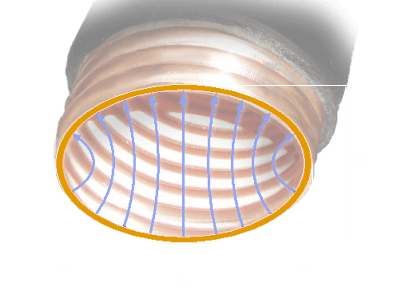Round and elliptical waveguides

Figure 1: Section of an elliptical flexible waveguide (Flexwell waveguide)
Round and elliptical waveguides
Round and elliptical waveguides got their name because of the shape of their cross-section. Nowadays waveguides with rectangular cross-sections are used for longer wave applications in the UHF range. In higher frequency ranges they are often only used for short connections.
Round waveguides are cheaper in higher frequency ranges but their processing is more complicated. Mathematically round waveguides can be calculated like elliptical waveguides, if both sides are set to the same size (a=b).
The calculation of the cut-off wavelength is very complicated. But as a visual rule of thumb, elliptical waveguides are almost twice the size of an electrically equivalent rectangular type. The decisive advantage of a flexible elliptical waveguide is that larger lengths can be transported in rolls or on cable drums. Elliptical waveguides allow smaller bending radii than purely round waveguides.

Figure 2: E-field in the elliptical waveguide (snapshot).
The name of the modes differ from those of the modes in the rectangular waveguide. In an elliptic waveguide, cosinus-elliptic HCm,n as well as sinus-elliptic HSm,n waves can occur. Generally, “m” indicates the number of field strength maxima on the wide side and “n” on the narrow side. An H21 wave in a rectangular waveguide therefore has two field strength maxima on the wide and one on the narrow side. The fundamental wave of a round or elliptical waveguide is called HC11.

polarization probe
polarization (behind)
horizontal waves
between probes
Figure 3: A short round waveguide within an LNB of a satellite antenna.

polarization probe
polarization (behind it)
horizontal waves
between probes
Figure 3: A short round waveguide within an LNB of a satellite antenna.
Round waveguides are used when:
- circularly polarized waves are to be guided to the antenna;
- linear vertically and horizontally polarized waves are present simultaneously (for example shown in Figure 3);
- using rotatable waveguide connections.
Figure 3 shows a view into the corrugated scalar horn radiator of a Low-Noise Bi-converter (LNB) whose plastic covers have been removed. A rod for a short circuit between the two probes is conspicuous. The probe for the horizontally polarized field can only be seen in the magnification directly in front of this post. (Note: the LNB is shown here lying down, in the mounting position the picture is rotated 90°.)

